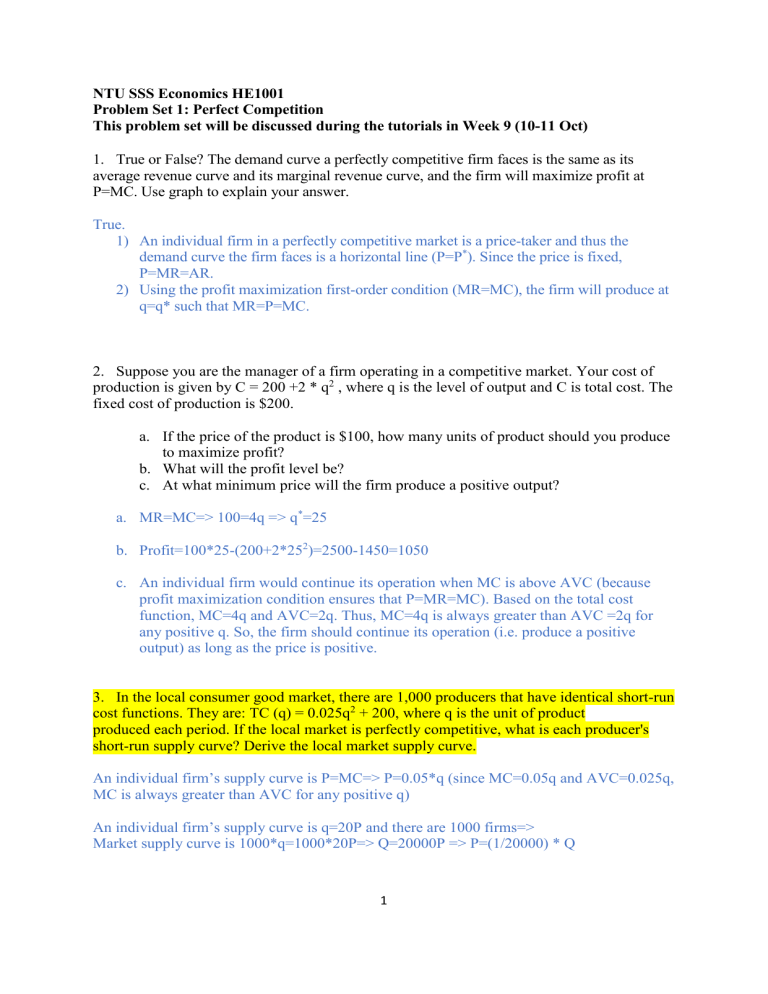
NTU SSS Economics HE1001 Problem Set 1: Perfect Competition This problem set will be discussed during the tutorials in Week 9 (10-11 Oct) 1. True or False? The demand curve a perfectly competitive firm faces is the same as its average revenue curve and its marginal revenue curve, and the firm will maximize profit at P=MC. Use graph to explain your answer. True. 1) An individual firm in a perfectly competitive market is a price-taker and thus the demand curve the firm faces is a horizontal line (P=P*). Since the price is fixed, P=MR=AR. 2) Using the profit maximization first-order condition (MR=MC), the firm will produce at q=q* such that MR=P=MC. 2. Suppose you are the manager of a firm operating in a competitive market. Your cost of production is given by C = 200 +2 * q2 , where q is the level of output and C is total cost. The fixed cost of production is $200. a. If the price of the product is $100, how many units of product should you produce to maximize profit? b. What will the profit level be? c. At what minimum price will the firm produce a positive output? a. MR=MC=> 100=4q => q*=25 b. Profit=100*25-(200+2*252)=2500-1450=1050 c. An individual firm would continue its operation when MC is above AVC (because profit maximization condition ensures that P=MR=MC). Based on the total cost function, MC=4q and AVC=2q. Thus, MC=4q is always greater than AVC =2q for any positive q. So, the firm should continue its operation (i.e. produce a positive output) as long as the price is positive. 3. In the local consumer good market, there are 1,000 producers that have identical short-run cost functions. They are: TC (q) = 0.025q2 + 200, where q is the unit of product produced each period. If the local market is perfectly competitive, what is each producer's short-run supply curve? Derive the local market supply curve. An individual firm’s supply curve is P=MC=> P=0.05*q (since MC=0.05q and AVC=0.025q, MC is always greater than AVC for any positive q) An individual firm’s supply curve is q=20P and there are 1000 firms=> Market supply curve is 1000*q=1000*20P=> Q=20000P => P=(1/20000) * Q 1 4. Please discuss whether the telecommunications services in Singapore is a perfectly competitive market. No 1) Buyers will incur transaction cost if they switch to another telco company. (e.g., you may need to pay registration fee when switching to a new telco services provider.) 2) The quality/scope of telco services differ among the service providers. (e.g., Singtel has faster mobile network than M1.) 2






